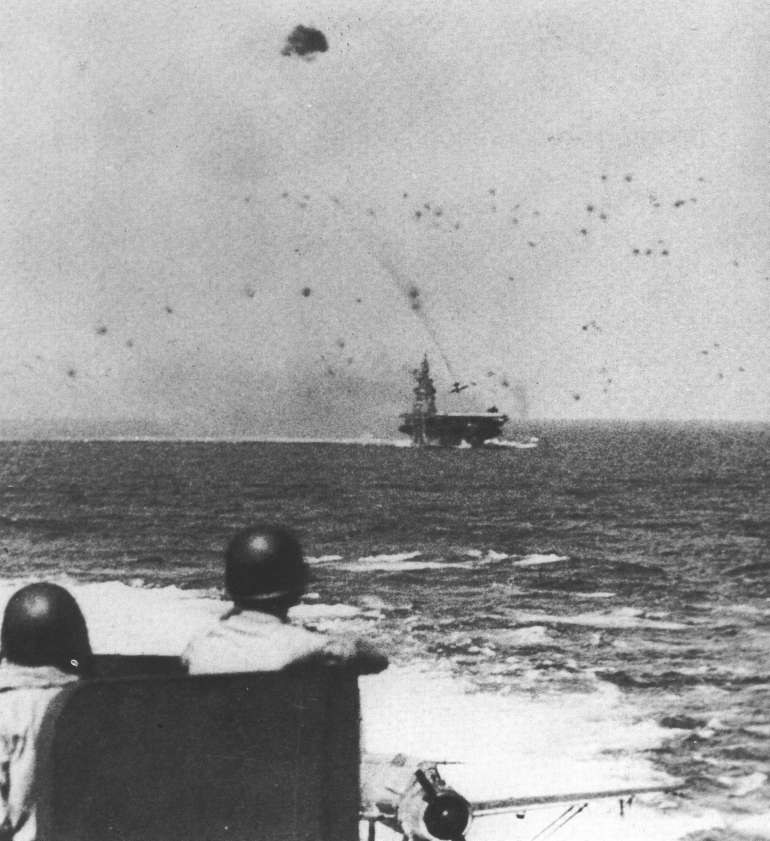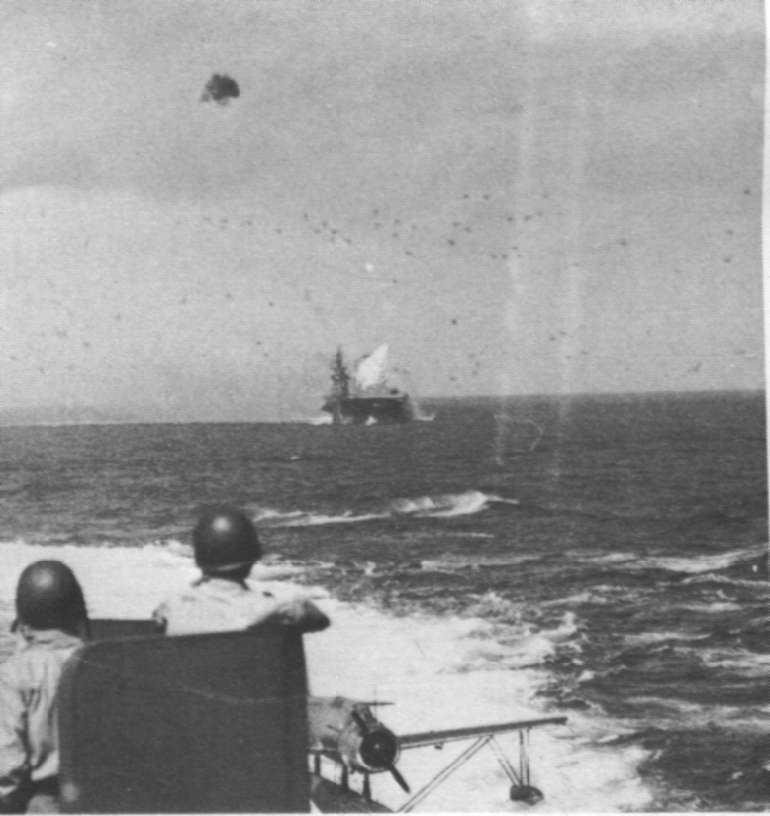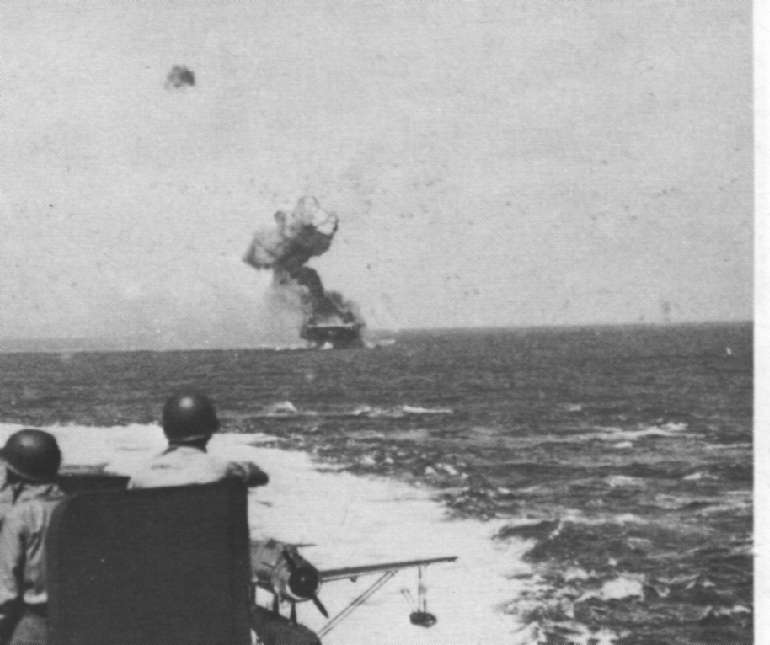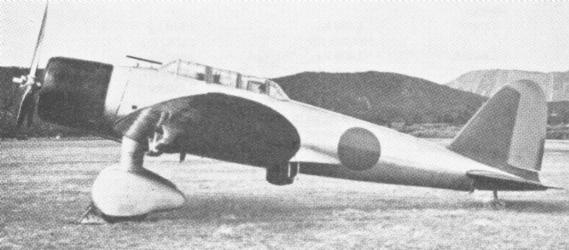|
Posted on 05/23/2003 5:37:11 AM PDT by SAMWolf
|
|
 are acknowledged, affirmed and commemorated.
|

| Our Mission: The FReeper Foxhole is dedicated to Veterans of our Nation's military forces and to others who are affected in their relationships with Veterans. We hope to provide an ongoing source of information about issues and problems that are specific to Veterans and resources that are available to Veterans and their families. In the FReeper Foxhole, Veterans or their family members should feel free to address their specific circumstances or whatever issues concern them in an atmosphere of peace, understanding, brotherhood and support.
|
|
|
|
Japanese Kamikazes In the 13th century, as legend goes, a Mongol emperor massed a large fleet for the invasion of Japan. The Japanese nation had little to defend itself with, and a Mongol conquest seemed certain. As the fleet massed outside Tokyo Bay gathered to attack, a typhoon came up and either sank all the ships or blew them back to China. This storm, which the Japanese believed was sent by the gods to save their nation, was called "Divine Wind." In Japanese, the name is "Kamikaze."  Vice Admiral Takajiro Ohnishi, Japanþs foremost expert on naval aviation and at one time Admiral Isoroko Yamamotoþs close advisor on the subject, formulated a plan wherein Japanese pilots would suicide-crash their planes into American ships. This tactic, which Ohnishi hoped would save Japan, was called kamikaze, in honor of the typhoon that saved his country from invasion. The formal name of the unit that had this mission was the Kamikaze Special Attack Corps. The kamikazes were unique in military history. Death in war is inevitable, but Japanese naval doctrine prior to 1944 forbid carrying out a mission unless there was some chance of survival. Adhering to the code of bushido (code of the warrior), all Japanese military men were prepared to die for the Emperor. This stemmed from the Japanese ideal of "The Path of Eternal Duty," the belief that family and individual welfare were not important when compared to the long history of the Empire. Japanese literature is replete with examples of warriors who died a glorious death on behalf of the Emperor. The kamikazes, however, were the first unit to actually seek death in battle. This concept was repugnant in the West, and there were those on the Japanese Imperial General Staff who objected to this strategy. They felt this step was needless, a waste of men, and an acknowledgement that Japan had lost the war. In spite of this opposition, Ohnishi lobbied strongly for his plan, and it was finally, if reluctantly, accepted.  The American invasion of Leyte (the Philippines) in October 1944 saw the debut of the kamikazes. The escort carriers guarding the transports and beaches had the dubious honor of being the first American naval units to encounter the Divine Wind. "Sacred warriors" sank the escort carrier St. Lo and damaged several other ships. Their efforts had little effect on the invasionþs outcome. The damage they inflicted, however, was a prelude to later and more effective massed attacks, particularly at Okinawa. The kamikazes continued attacks against American shipping through the remainder of the campaign in the Philippines. During the invasion of Iwo Jima, they continued the strategy of attacking shipping, both combatant and transport. Some escort carriers were sunk and some major fleet combatants, particularly the aircraft carrier Franklin, were severely damaged. However, Iwo Jima was taken and secured. The significant point about these two campaigns was that these kamikaze attacks were carried out independently of other Japanese defense measures. Okinawa was different.  At Okinawa, which was invaded by American troops on Easter Sunday, 1945, the kamikazes were incorporated from the beginning as an integral part of the defense of the island. Being the closest land to the Empire yet invaded, Japanese strategists were determined to hold the island at all costs. Kamikaze operations at Okinawa were the fiercest of the war, and the most frightening, in view of their intensity. The Okinawa kamikazes were called "kikusui," meaning "floating chrysanthemum," in honor of the imperial symbol of Japan. From the onset of the invasion until the end of the Okinawa campaign, over 1,900 suicide attacks took place. The largest number of attacks was carried out during the period April 6-7, when 355 planes participated. American strategy was revised to deal with the threat. An outer picket ring of radar-equipped ships, usually destroyers, destroyer escorts and minesweepers, was established to provide early warning of incoming kamikaze raids. It was hoped that with enough advance warning, fleet units would be able to disperse in time to repel the threat. These picket ships bore the greatest brunt of the kamikaze attacks. They were often kamikaze targets because from the air, the inexperienced Japanese flyers mistook them for battleships and cruisers.  One of these picket ships underwent an amazing ordeal in the waters off Okinawa on April 16, 1945. The destroyer Laffey, under the command of Commander (later Rear Admiral) F. Julian Becton, was assigned to radar picket station No. 1 that day. In a period of 80 minutes, Laffey underwent 22 separate attacks by 32 planes. She was struck by six of them, suffered four bomb hits and was continuously strafed. Her gunners destroyed at least eight of the attackers. At the conclusion of the attack, only four of Laffeyþs 20mm mounts were still firing. Her main batteries were destroyed, her stern was almost awash, her rudder was jammed, and she was barely able to make steam. Laffeyþs gallant crew, under the direction of Becton, who vowed that he would never abandon his ship while one of its guns still fired, made heroic efforts to save their stricken vessel. They not only kept Laffey afloat, but managed to bring her home to Seattle, Washington, under her own power for repairs. Laffey continued in service until well after World War II, when she was finally and honorably decommissioned. Were the kamikazes successful? From a strategic and tactical point of view, the answer is "no." Ohnishi hoped they would turn the tide of the war in Japanþs favor, and allow at least a negotiated peace. He had hoped that the Americans would psychologically be unable to deal with this type of threat. He was wrong on both counts.  The kamikazes operating during the Okinawa campaign did take a terrible toll on American lives and ships. At the beginning of the suicide operations, there was stunned disbelief on the part of American sailors that other men would be willing to kill themselves in order to destroy them. Because the threat was continuous, shipsþ personnel were forced to remain at battle stations for days on end. Fatigue began to take its toll, on ships and men. Sleep and food, often taken for granted, became precious to American sailors. In summation, the Okinawa kikusui operation damaged 368 ships and sunk 32. Suicide planes killed 4,900 American sailors and wounded over 4,800. These were the heaviest losses incurred in any naval campaign in World War II. Over 2,000 Japanese pilots lost their lives in the suicide attacks off Okinawa. Because the many kamikaze attacks at Okinawa did not stem the American advance, Vice Admiral Matome Ugaki, commander of the Japanese 5th Air Fleet, wanted to atone to the Emperor and the kamikazes who died under his command. He ordered three planes readied, intending to lead a final suicide attack against Okinawa. The attack was scheduled to leave Japanþs Kyushu Island on Aug. 15, 1945, the day the Emperor announced the decision to surrender.  When Ugaki went to his plane, 10 others were revved up on the runway with it. Questioning this, Ugaki was told by the squadron leader that when the fleet commander himself led the attack, every squadron plane would follow. True to the code of the warrior, the 11 took off for Okinawa. Symbolic of the futility of the kamikaze attacks in changing the warþs outcome, the mission did not succeed. The plane flown by Ugaki fell harmlessly into the Pacific Ocean. Late in the evening of Aug. 15, Ohnishi, the man who sowed the Divine Wind, committed hara kiri, the ritual suicide of the Japanese warrior.
|
Who would have ever thought that was a possibility??

|
Air Power |
The Japanese navy, in the summer of 1936, issued a specification call (II-Shi) for a carrier-based airplane with dive-bombing capabilities. The specifications called for a monoplane design. As usual, the leading manufacturers submitted designs. Mitsubishi, Nakajima, and Aichi received contracts to build prototypes.
After tests were completed, the Aichi company was ready to compete for the contract. One unusual characteristic of the Val was its fixed and spatted undercarriage -- the fixed landing gear added weight and decreased performance, but actually added stability to this particular design.
A second prototype was constructed with the enlargement of the wings, tail and stabilizers. An increased powerplant capacity was fulfilled by the addition of a Mitsubishi Kinsei No. 3, a 14-cylinder air-cooled radial engine. As with the first prototype, the aircraft carried two seats, one for the pilot and one for the rear gunner/radio operator.
It was later found that, because the aircraft was so maneuverable, the Val could be used as a fighter plane despite the light armament of two 7.7mm Type 97 machine guns (mounted on the engine cowling) and one flexible 7.7mm Type 92 rear-mounted machine gun.
The Val carried a 250kg (551-pound) bomb under the fuselage that was released via a swing arm. In addition, two 60kg (132- pound) bombs could be carried on racks under each wing.
Carrier qualification trials were held aboard the AKAGI and KAGA in 1940 with satisfactory results. Vals saw limited action in China in the year preceding the attack on Pearl Harbor.
Historians for the most part agree that the first bombs to fall at Pearl Harbor came from Lt. Commander Kakiuchi Takahashi's attack group of dive bombers that struck the PBY ramp at Ford Island. For the AICHI Vals, the day proved successful but costly -- a majority of the 29 aircraft lost were Vals.
Like the NAKAJIMA Kate, the Val enjoyed early success in the war but by 1944 it was suffering heavy losses and was outperformed by allied aircraft. As the war drew to a close, the AICHI D3A1 Val was pressed into Kamikaze units.
Additional comments:
When the Japanese launched their surprise attack on December 7, 1941 against Pearl Harbor, the Aichi D3A1 became the first Japanese aircraft to drop bombs on American targets.
This aircraft sank more allied ships and more shear tonnage than any other Axis aircraft in WWII.
Specifications:
Type: Carrier based dive bomber
Allied Codename: Val
Crew: Two
Production: Around 1,500 total (D3A2: 1,016)
Powerplant:
D3A1 (Early):
- Model: Mitsubishi Kinsei 43
- Type: Radial piston
- Number: One - Horsepower: 1,000 hp
D3A1 (Later):
- Model: Mitsubishi Kinsei 44
- Type: Radial piston
- Number: One - Horsepower: 1,070 hp
D3A2 Model 12:
- Model: Mitsubishi Kinsei 54
- Type: Radial piston
- Number: One - Horsepower: 1,300 hp
Dimensions:
Wing Span: 47 ft. 2 in. (14.38m)
Length: 33 ft. 5.375 in. (10.2m)
Height: 12 ft. 7½ in. (3.85m)
Wing Area: 375.7 sq ft. (34.9 m²)
Weights:
Empty:
- D3A1: 5,309 lb. (2408 kg)
- D3A2: 5,666 lb. (2570 kg)
Max. Take-Off:
- D3A1: 8,047 lb. (3650 kg)
- D3A2: 8,378 lb. (3800 kg)
Performance:
Maximum Level Speed:
- D3A1: 239 mph (385 km/h) at 9,840 ft.
- D3A2: 267 mph (430 km/h) at 20,340 ft.
Cruising Speed:
- D3A1: 183 mph (295 km/h) at 9,840 ft.
Service Ceiling:
- D3A1: 30,150 ft. (9300 m)
- D3A2: 34,450 ft. (10500 m)
Climb to 9,840 ft.: 6 Minutes 25 Seconds
Max. Range:
- D3A1: 913 miles (1470 km)
- D3A2: 840 miles (1352 km)
Armament:
Two 7.7-mm (0.303-in) Type 97 machine guns in wings.
One 7.7-mm (0.303-in) Type 92 machine gun in rear cockpit.
Payload:
One 551 lb. (250 kg) and two 132 lb (60 kg) bombs 


All photos Copyright of:
War Bird Resource Group
Aviation History.com
Ken's Aviation


The Baka Bomb was carried under a twin engine land-based Navy bomber. The pilot was locked in the cockpit and as the mother plane approached a target the Baka left the parent airplane to make a diving attack propelled by rocket power. The 289 mph maximum gliding speed reached 405 mph when rocket-propelled. The rocket power lasted 30 seconds.

Arrivals and departures of higher ranking officers were often noted on the Baka Bomb in front of Division Headquarters. If the officer was arriving the message would be "Welcome" painted on the nose of the bomb and the name of the person would be displayed on the side of the bomb, just under the cockpit. If departing "Sayonara" was painted on the nose. In this picture the arrival of Colonel and Mrs. J.B. Day, USA Retired, is noted. Click
Thanks for profileing the Val today Johnny. She had an impressive record of service
It is sort of strange knowing he was there at that moment. That same picture is in a book of the Maryland that my mother has. He got it while he was still in the navy. It laid around the house for years, I used to pick it up and leaf through it now and then and now to see that same picture on the internet is a little strange. My dad would have been interested to see it but he passed away about 25 years ago. It really bothered him when the Maryland was scrapped in 1959.
Disclaimer: Opinions posted on Free Republic are those of the individual posters and do not necessarily represent the opinion of Free Republic or its management. All materials posted herein are protected by copyright law and the exemption for fair use of copyrighted works.